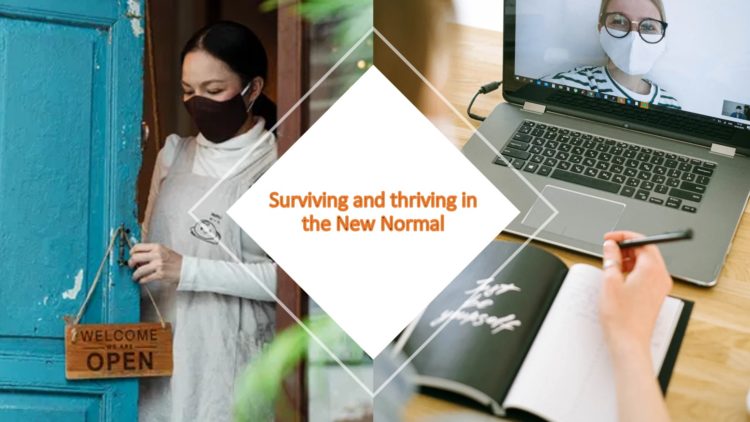We are living in a new age. Forced by pervasive pandemic measures, disruption to trade and supply chains, and a sudden loss of revenue streams, many companies are left in the cold.
While many of the large enterprises had business continuity plans that featured pandemics, these were not calibrated for prolonged periods of uncertainty amid stalled human activity on a global scale.
So how did companies cope, and how do you move forward? CXOCIETY co-hosted a series of webinars with IBM. Below are some key insights.
Cash flow economics
When business gets disrupted, cash becomes vital. It is also the first place where chief financial officers and financial controllers will look into.
In the webinar, “Working capital optimization (and financial stress testing) in times of stress”, participants noted the importance of focusing on working capital.

“With sales going down and unplanned expenditures coming in [related to COVID-19], the impact to working capital becomes acutely important,” said Tony Lee, head of finance transformation for ASEAN at IBM Services.

Under pressure, companies need to understand their next steps. “It is all about how businesses can manage their response better and knowing what kinds of cash flow issues will hit you,” said Rahul Pushkarna, global analytics leader (CPS) at IBM Global Business Services.
Additional risks from additional legislation and supply chain disruptions mean companies need to study their country exposure.

“For us, the first thing we looked at was where our key customers and key suppliers were. And from there, we see if we can meet their needs,” said Felix Wang, general manager of accounts, finance and admin, Itochu Plastics.

Inventory management also becomes a key concern with workflow capital. “When there is a lot of uncertainty in demand, you need to see how you can work with the supply chain and commercial and do robust planning when building an inventory. Because holding onto inventory is also a cost,” said Keyur Shah, regional director of finance, F&A COE, APAC, Johnson & Johnson.
It comes down to what Lee describes as the time value of money. “It is not the sexiest part of finance, but when you see the kinds of demand and supply fluctuations we have seen, the call to action is to know where you stand in terms of cash flow.”
Data that shows long-term trends becomes vital during times of stress. It can help companies understand where they are, what they have to do next, and how to navigate incoming challenges.

Jean Fernandes, regional chief financial officer for ASEAN and South Asia, Standard Chartered Bank suggested that working capital optimization should have been an ongoing exercise and optimally should not start during a crisis. The reason is that optimization requires baseline data to show what is normal.
“During stress, you need to understand what factors are changing and overlay that to the data. Then analyse whether these changes are temporary or permanent,” she continued.
Chief financial officers should not, however, get lost in quantitative data. “The balance between qualitative and quantitative is even more key in a stressful environment,” she added.
The digital omnipresence
Digital penetration in our life has been increasing over the years but the pandemic has expedited the shift of balance from physical to digital.
This sudden shift to digital across all demographics and industries meant companies had to reimagine their business models and pivot towards “Digital ways of engaging in the new normal”.

Nishit Gupta, partner Enterprise strategy and iX, ASEAN at IBM prefaced the discussion by setting three stages.
Stage 1 – “Crisis Chaos” - is a state of confusion due to the pandemic; stage 2 – “Stabilise” - planning to reopen and operate in the next normal; stage 3 – “Operational and Resilient” is operating in the next normal.

“We are in stage 2 in terms of planning the new normal. We need to stay agile because we do not know what the new normal looks like,” acknowledged Caitlin Nguyen, digital transformation leader and head of digital business transformation at Sanofi Consumer Healthcare.
At Electrolux, the company’s director for contact centre and field operations in APAC and MEA, Grace Tang, noted that not all countries are at the same level because of differences in legislation and readiness.

Pranay Mehra, vice president for digital and eCommerce in APAC at Shiseido Group added digital is now critical for this agile approach moving forward. He cited the example of beauty consultants who could no longer man their counters in retail stores as a result of COVIFD-19.
“Customers still have a need. In Thailand, we did live streaming with 14 million viewers. We are also doing this concept of chat and collect, where over chat messages you can tell beauty consultants what you want and then a fulfilment service gets [the product] to you,” Mehra elaborated.
The shift in customer behaviour is now speeding up digital transformation. “What COVID-19 has done in eight weeks I have not done in two and a half years. The need for transformation has become more imminent,” he said.

Thomas Hawker, customer engagement architect on Salesforce at IBM iX described this level of digital soul searching as boiling down to trust. "Trust needs to be the centre point. Start by focusing on the customer and their needs and with this time customers want honesty.”
IBM’s Gupta advised companies to re-look at the value of primary and secondary research instead of just relying on previous data collected as we are in an unprecedented situation. “How do you define experiences for the next normal? We need to research with our employees and customers to gain deeper insights and combine this with the insights based on data”
Analytics becomes pivotal
When the road is unclear, businesses need to dig deep into their data resources. This makes analytics and artificial intelligence critical for companies navigating the pandemic.
In a third webinar, titled “Resources and insights for navigating in uncertain times” participants noted how unlocking the value hidden in data has become a board-level concern.

Currently, the most important driver for analytics is staying engaged with the customer and ensuring the right customer experience. “But this is a formidable task,” admitted Alp Altun, regional chief transformation officer, Asia Pacific at Allianz.
One way to address the complexity is making IT simpler. Allianz is simplifying its products, processes and platforms. “So, we can then run a proper data analytics strategy on them,” described Altun.

Getting the right information to the right people securely and at speed is another challenge. “Business is asking for speed. But the reality is that you need to balance speed with risk,” said Nirupam Das, chief information officer and technology leader P&C Hong Kong, Liberty Mutual Insurance. He sees himself playing a “balancing role.”
When companies shift from data-driven to becoming more data-centric, bad data can be a monumental challenge.

“At best, it should not be allowed to enter the ecosystem. Having visibility from the source of record – who is inputting the data – is vital, because once it enters your system, ensuring clear pre-processing of data becomes equally important,” said Sonal Jain, chief data and analytics officer, Validus Capital.
Done correctly, a data-centric organization goes beyond dashboards. The ability to query an entire organizational data lake to identify trends and issues becomes a business differentiator.

“With self-service capabilities, dashboards will evolve to have the capability to search data and gain new insights,” said Sena Nallasenapathi Periasamy, partner for AI, Analytics and IoT services at IBM.
What those questions are is something companies are still grappling with. Jain felt that we need to teach business leaders what they can achieve with data. “Sometimes they are not aware of what data can bring to the table.”
Altun added that in uncertain times like a pandemic, companies need to bring these capabilities to the frontline staff. “It is where people have the first line of sight of any issues on customer experience. So, you need to think about a top-down and bottom-up approach in educating people and empowering the front lines.”
It is one reason why companies like IBM are making it easier to do data analytics. “Simplification and a clear ROI so you can focus on critical use cases,” said Kumar.
The New Normal — different for everyone
The unifying message across all three webinars is that the technology is ready. Tools and solutions were already there before the pandemic; new capabilities are being added as companies face off-market and operational challenges or pivot their business model.
What is certain is that the new business normal will be different for every business. Since every company had a different starting point, the strategies and tactics will differ. There will not be one pandemic-recovery blueprint for all; rather, it will be personal to each business.
How well they have prepared will now be tested as countries remove the pandemic restrictions, bring back operations to some normalcy, and focus on recovery.





